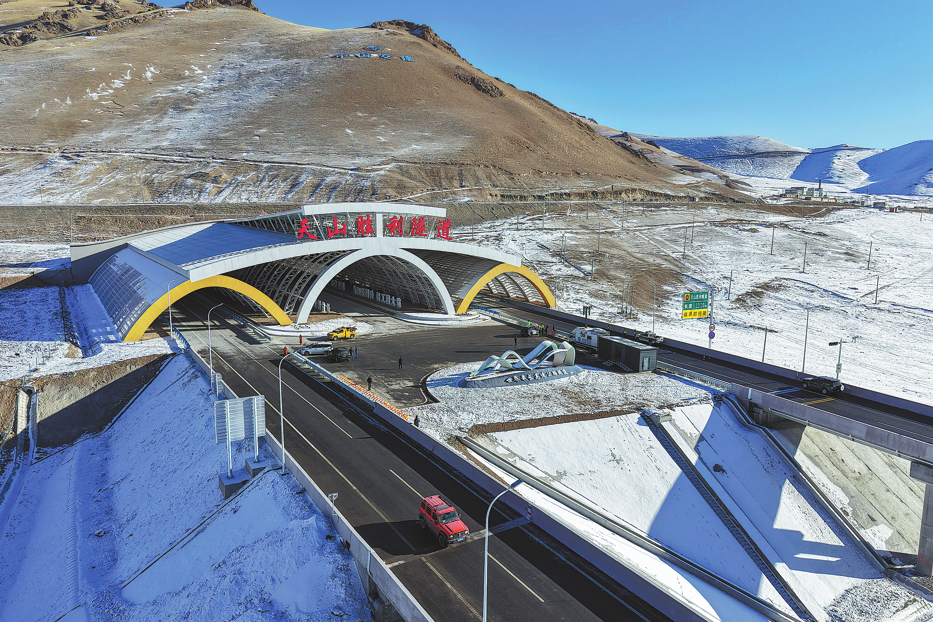Smarter urbanization
Potential and vitality of small and medium-sized cities should be unleashed


At the Fifth Plenary Session of the 19th Communist Party of China Central Committee, proposals for formulating the 14th Five-Year Plan (2021-25) were adopted, setting the target of basically achieving a new type of urbanization.
The focus of the new type of urbanization is to bring the quality of urbanization to a higher level, which involves a lot of issues such as reforms on household registration of rural migrant workers.
Urbanization ratio of China's permanent residents was 60.58 percent in 2019, however this figure is only 44.38 percent when the denominator is changed to people with urban household registrations. This 16 percentage point gap equals 228 million people. Even with slowing economic growth, there will be several million people migrating from agriculture to other industries and getting employed in cities and towns every year. Therefore, it is necessary to accommodate the needs of not only the 228 million rural population who are already living within cities, but also the large number of future incomers. It won't be easy to achieve this goal because it will inevitably have an impact on the interests of current residents. So policymakers should come up with feasible and pragmatic measures to break the hurdles of existing systems and make steady progress.
The main task during the 14th Five-Year Plan period is to ensure the urbanization of rural migrants and offer them equal public services. Household registration limits should be further reduced except for the few megacities to meet the target that by 2035 most migrant workers can settle in the cities and towns where they are employed.
Another aspect is to make better and intensive use of construction land in both urban and rural areas. Although market-based reform has been proposed for collectively-owned construction land, there is still much work to be done to realize this.
The relevant authorities should conduct pioneering explorations to find ways of utilizing idle construction land instead of acquiring new land, break the barriers of urban-rural land circulation and prevent governments and companies from encroaching on rural land. As more of the rural population becomes city dwellers, some still possess land in their former rural villages but the cities where they currently reside have to make land for them to live on. Considering the high development cost of urban land, it is necessary to leverage the role of collectively-owned land by reforming the land management system. There exists huge potential in this respect but policy implementation is the key to success.
If China is to build an urban-rural spatial layout with city clusters and metropolises at the core and in harmony with smaller cities and towns on the periphery, it should focus on readjusting the urban-rural management system to unleash the potential and vitality of small and medium-sized cities, so as to alleviate the population and industries of the core cities. This means building more new cities and making changes to the current system: the 820 million permanent dwellers now live in only 684 cities. That is far from enough.
There are some essential differences between the concept of a city in China and that in the rest of the world. A Chinese city is more an administrative region. As a result, there is large amount of work to be done in the years to 2035 to carry out reforms of the city management system and systems of administrative regions. Meanwhile, it needs to be taken into consideration to increase the number of cities and give a larger role to small and medium-sized cities so as to nurture different-sized cities complementing each other, based on the allocation of factors and resources.
The new type of urbanization also faces new topics like how to utilize the internet, big data, artificial intelligence and other technological advances for innovative development and smart governance.
As a latecomer to urbanization, China has great chance and huge market potential for smart city governance and intelligent products. Plus, China has the world's largest internet and big data resources, which are mainly located in cities. Therefore, it is both an opportunity and a challenge for cities to achieve innovative governance, using high-tech approaches and the application of data. It is also a question that the new type of urbanization must answer.
With the new type of infrastructure projects being rolled out during the 14th Five-Year Plan and emerging technologies being applied in cities, China will have a leading role in smart cities when 2035 comes. Expanding cities will create more demand and eventually fuel technological transformation. In this sense, China's new type of urbanization is endowed with more enriched content.
The author is an independent economist and member of the Academic Committee of China Institute for Rural Studies at Tsinghua University. The author contributed this article to China Watch, a think tank powered by China Daily. The views do not necessarily reflect those of China Daily.


































